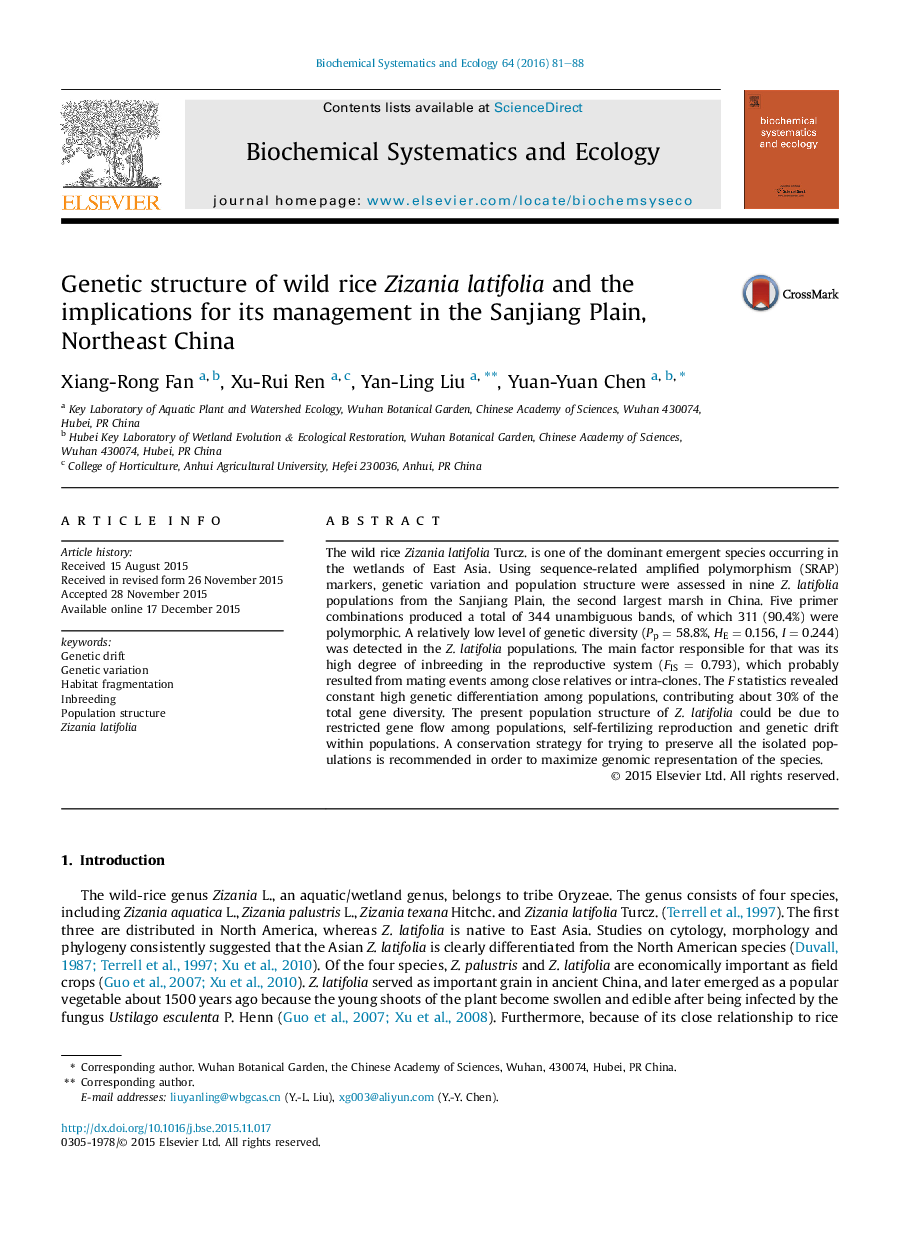| Article ID | Journal | Published Year | Pages | File Type |
|---|---|---|---|---|
| 1353834 | Biochemical Systematics and Ecology | 2016 | 8 Pages |
•Zizania latifolia is valuable genetic resources and important to aquatic ecosystems.•Genetic structure of Z. latifolia was analysed with SRAP markers in Sanjiang Plain.•Low genetic diversity and high genetic differentiation were found.•A compromised genetic health was suggested in Z. latifolia populations.•Conservative efforts were recommended for the isolated populations.
The wild rice Zizania latifolia Turcz. is one of the dominant emergent species occurring in the wetlands of East Asia. Using sequence-related amplified polymorphism (SRAP) markers, genetic variation and population structure were assessed in nine Z. latifolia populations from the Sanjiang Plain, the second largest marsh in China. Five primer combinations produced a total of 344 unambiguous bands, of which 311 (90.4%) were polymorphic. A relatively low level of genetic diversity (Pp = 58.8%, HE = 0.156, I = 0.244) was detected in the Z. latifolia populations. The main factor responsible for that was its high degree of inbreeding in the reproductive system (FIS = 0.793), which probably resulted from mating events among close relatives or intra-clones. The F statistics revealed constant high genetic differentiation among populations, contributing about 30% of the total gene diversity. The present population structure of Z. latifolia could be due to restricted gene flow among populations, self-fertilizing reproduction and genetic drift within populations. A conservation strategy for trying to preserve all the isolated populations is recommended in order to maximize genomic representation of the species.
